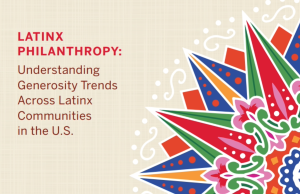Almost 62% of giving decisions by households are made together. That sounds like a lot but it’s down from 73.4% in 2005, according to a new report. And forget the spouse’s ex. The baggage might be their philanthropy.
Women Give 2021: How Households Make Giving Decisions provides the first new data in 15 years about charitable decision-making among the general population. The 40-page report from the Women’s Philanthropy Institute (WPI) at the Indiana University Lilly Family School of Philanthropy is funded by a grant from the Bill & Melinda Gates Foundation.
When one partner in the household decides, it’s more likely to be the female (15.3%, up from 6.5% in 2005) than the man (12.1%, up from 3.5%). The remaining couples decide separately (11.1%, down from 16.2%).
Couples who decide together about charitable giving are typically older and have children. Younger couples are more likely to have one partner make the decision or are among the 1 in 10 who decide separately.
The report suggests that decisions that are not made together could be due to couples marrying later and entering relationships with preferred charitable causes, as well as shifting gender roles within couples. Among sole decider households, individuals have varying thresholds for how much they will give without consulting partners; the amount is nearly three times higher for men ($901) compared to women ($311) but separate decisions have the highest threshold ($1,180) and joint deciders the lowest ($239).
The average amount given in 2019 by charitable decision-making style was highest among male-deciding households ($1,981), followed closely by joint households ($1,886), and women-deciding households ($1,561). Separately deciding households were lowest by far ($1,015).
“Findings signal the importance of understanding the dynamics of household decision-making as gender roles continue to shift and evolve,” said Jeannie Sager, director of WPI. “For nonprofits, this is an opportunity to rethink how they engage every member of the household in conversations about giving and impact.”
The report also compares the charitable giving decision-making with other financial decisions, such as buying clothes, buying groceries, paying taxes, long-term financial planning, and short-term financial management. Charitable-giving decisions are most similar to short-term financial management decisions, except that more households use separate decision making about giving.









